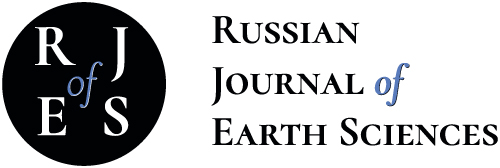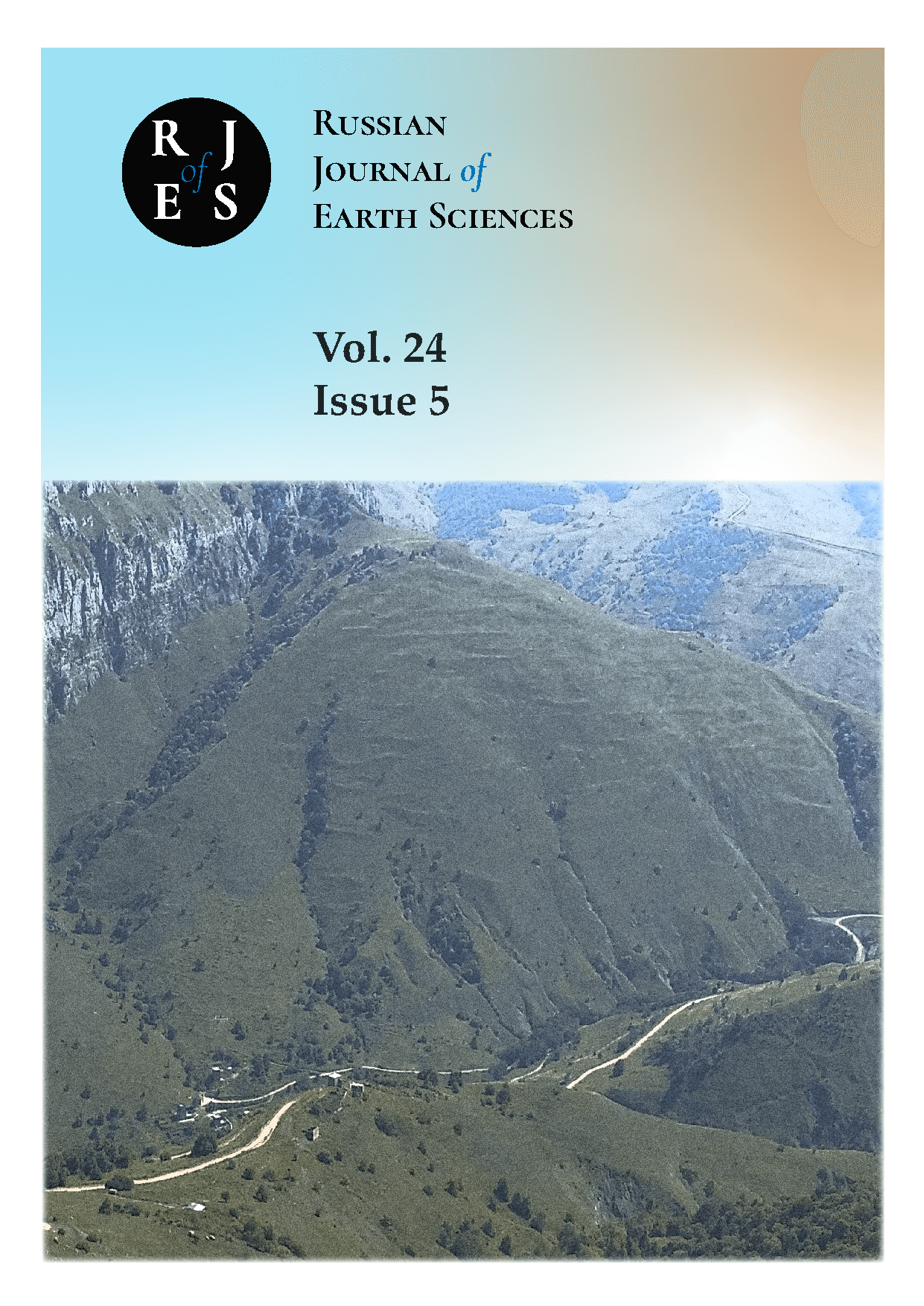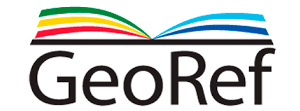doctoral candidate from 01.01.2011 to 01.01.2014
Federal State Budgetary Institution of Science The Complex Scientific Research Institute. H.I. Ibragimov of the Russian Academy of Sciences (Chief Researcher)
from 01.01.2018 until now
Grozny, Russian Federation
Institute of Oil and Gas, Grozny State Petroleum Technological University. acad. M.D. Millionshchikov
UDC 551.4
UDC 911.6
UDC 379.85
UDC 55
UDC 550.34
UDC 550.383
CSCSTI 37.01
CSCSTI 37.15
CSCSTI 37.25
CSCSTI 37.31
CSCSTI 38.01
CSCSTI 36.00
CSCSTI 37.00
CSCSTI 38.00
CSCSTI 39.00
CSCSTI 52.00
Russian Classification of Professions by Education 05.00.00
Russian Library and Bibliographic Classification 26
Russian Trade and Bibliographic Classification 63
BISAC SCI SCIENCE
The article presents the results of zoning of the territory of the North-Eastern Caucasus based on the analysis of geomorphological features and their influence on the organization of recreation. The following methods were used in this work: systematic, comparative-geographical and cartographic, as well as field studies and GIS-technologies. Map construction and statistical data processing were performed using ArcGis software package. The important role of relief in recreational specialization of the study area is shown. The features of methodological approaches to recreational assessments of relief in the works of domestic and foreign researchers are revealed. On the territory of the NorthEastern Caucasus on the basis of the analysis of qualitative and quantitative characteristics of relief taking into account the geological, paleogeographical and landscape features of the territory, five recreational-geomorphological districts were identified: plains, primorsky, foothills, intra-mountain and highland. In each of the indicated districts the tourism and recreational resources and prerequisites determining the development of certain types of tourist specialization are shown. In the plain recreational-geomorphologic district the most demanded are scientificcognitive, therapeutic, health-improving and ethno-cultural tourism. Alongside the historical and cultural heritage, the area has modern architecture, such as the Grozny-City high-rise building ensemble in the Chechen Republic. Primorsky district is favorably distinguished by opportunities for sea tourism. The foothill district is characterized by significant landscape diversity and the presence of recreational resources: fauna and flora, cultural and historical, etc. The most relevant types of tourism include: health-improving (terrenekur, forest therapy, phytotherapy, balneotherapy), sports (hunting, fishing, equestrian sports) and scientific-cognitive tourism. Intra-mountainous and highland areas are characterized by more complex contrasting relief, so the most relevant areas of tourism here include scientific-cognitive, geological, cultural-historical, sports and extreme tourism.
relief, geomorphological conditions, zoning, recreation, tourism, recreational-geomorphological district
1. Abdullaeva I. V., Bredikhin A. V. Recreational-geomorphological zoning of the South-Eastern Baltic Coast // Problems of regional ecology. — 2018. — No. 2. — P. 119–123. — DOI:https://doi.org/10.24411/1728-323X-2018-12119. EDN: https://elibrary.ru/XTCFFJ
2. Akaev B. A., Ataev Z. V., Gadzhieva Z. K., et al. Physical geography of Dagestan: a textbook for students. — Moscow : Shkola, 1996. EDN: https://elibrary.ru/UPWTVT
3. Arora K., Rajput S., Anand R. R. Geomorphosites assessment for the development of scientific geo-tourism in North and Middle Andaman’s, India // GeoJournal of Tourism and Geosites. — 2020. — Vol. 32, no. 4. — P. 1244–1251. — DOI:https://doi.org/10.30892/gtg.32408-564. EDN: https://elibrary.ru/PAGJTZ
4. Ataev Z. V. Orography of Eastern Caucasian high mountains // Geographical bulletin. — 2012. — 2(11). — P. 4–9. EDN: https://elibrary.ru/VDXCSR
5. Ataev Z. V., Bratkov V. V. Relief as a factor of spatial differentiation and settlement development of landscapes of Dagestan // Priority directions of science and education development. — 2015. — 4(7). — P. 21–24. DOI: https://doi.org/10.46698/VNC.2024.21.47.003; EDN: https://elibrary.ru/EZFBKV
6. Babeshko V. A., V.Evdokimova O., Babeshko O. M., et al. About earthquake precursors in an earthquake-prone mountainous area // Geology and Geophysics of Russian South. — 2024. — Vol. 14, no. 2. — DOI:https://doi.org/10.46698/vnc.2024.21.47.003.
7. Bayrak G. R., Teodorovych L. V. Geological and geomorphological objects of the Ukrainian Carpathians’ Beskid Mountains and their tourist attractiveness // Journal of Geology, Geography and Geoecology. — 2020. — Vol. 29, no. 1. — P. 16–29. — DOI:https://doi.org/10.15421/112002. DOI: https://doi.org/10.24412/2500-1000-2023-4-3-33-38; EDN: https://elibrary.ru/DRKUUC
8. Bosson J.-B., Reynard E. Geomorphological heritage, conservation and promotion in high-alpine protected areas // Journal on Protected Mountain Areas Research. — 2012. — Vol. 4, no. 1. — P. 13–22. — DOI:https://doi.org/10.1553/eco.mont-4-1s13. EDN: https://elibrary.ru/HRMSGJ
9. Chichinadze T. Geomorphological Zoning of Racha Region for Geopark Planning // Open Journal of Geology. — 2022. — Vol. 12, no. 03. — P. 179–187. — DOI:https://doi.org/10.4236/ojg.2022.123009. DOI: https://doi.org/10.25744/genb.2021.23.1.003; EDN: https://elibrary.ru/GBMDBP
10. Dotsenko V. V. Geomorphology of North Yursk depression within the Chechen Republic and adjacent territories // Grozny Natural Science Bulletin. — 2021. — Vol. 6, no. 1. — P. 17–40. — DOI:https://doi.org/10.25744/genb.2021.23.1.003. DOI: https://doi.org/10.46698/VNC.2023.14.67.012; EDN: https://elibrary.ru/MAYCGG
11. Erdenejargal N., Dorjsuren B., Choijinjav L., et al. Evaluation of the Natural Landscape Aesthetic: a Case Study of Uvs Province, Mongolia // Polish Journal of Environmental Studies. — 2021. — Vol. 30, no. 5. — P. 4497–4509. — DOI:https://doi.org/10.15244/pjoes/132788. EDN: https://elibrary.ru/TKZVTP
12. Gavrik A. V. Relief of the Leningrad region as a basis for recreational nature management // International journal of humanities and natural sciences. — 2023. — Vol. 4–3, no. 79. — P. 33–38. — DOI:https://doi.org/10.24412/2500-1000-2023-4-3-33-38. DOI: https://doi.org/10.34824/VKNIIRAN.2021.7.3.008; EDN: https://elibrary.ru/WAKSOW
13. Golovlev A. A. Map of the physical-geographical zoning of the territory of Mountainous Chechnya // Bulletin of Higher Educational Institutions. North Caucasus Region. Natural Science. — 2005. — No. 4. — P. 42–47. DOI: https://doi.org/10.21782/GIPR0206-1619-2017-2(5-16); EDN: https://elibrary.ru/YSKUWF
14. Hou Y., Zhao W., Hua T., et al. Mapping and assessment of recreation services in Qinghai-Tibet Plateau // Science of The Total Environment. — 2022. — Vol. 838. — P. 156432. — DOI:https://doi.org/10.1016/j.scitotenv.2022.156432. DOI: https://doi.org/10.31857/S0435428121010077; EDN: https://elibrary.ru/FEPRHL
15. Karaev Yu. I., Vaskov I. M., Gunya A. N., et al. UNESCO Global Geoparks for sustainable development of mountain territories (North Caucasus, Chechen Republic) // Bulletin of the KNII RAS. — 2021. — Vol. 3, no. 7. — P. 66–76. — DOI:https://doi.org/10.34824/VKNIIRAN.2021.7.3.008. DOI: https://doi.org/10.17072/2079-7877-2017-4-161-169; EDN: https://elibrary.ru/YLJJTE
16. Korytny L. M. The basin concept: From hydrology to nature management // Geography and Natural Resources. — 2017. — Vol. 38, no. 2. — P. 111–121. — DOI:https://doi.org/10.1134/S1875372817020019. EDN: https://elibrary.ru/IIUCPL
17. Kubalíková L., Kirchner K., Bajer A. Geomorphological Resources for Geoeducation and Geotourism // Global Geographical Heritage, Geoparks and Geotourism. — Springer Singapore, 2020. — P. 343–358. — DOI:https://doi.org/10.1007/978-981-15-4956-4_18.
18. Kuzmin S. B. Types and objectives of geomorphological zoning // Geomorphology. — 2021. — Vol. 52, no. 1. — P. 61–74. — DOI:https://doi.org/10.31857/S0435428121010077. EDN: https://elibrary.ru/WGODWL
19. Lima B., Silva C., Martins P., et al. Visual quality of the landscape: the tourist attractiveness of Serra do Amolar, Pantanal, Brazil // Journal of Tourism and Heritage Research. — 2023. — Vol. 6, no. 4. — P. 81–95.
20. Los M. A. Assessment of the relief of the Tyumen and Tobolsk tourist and recreational framework for tourism development // Geographical bulletin. — 2017. — 4(43). — P. 161–169. — DOI:https://doi.org/10.17072/2079-7877-2017-4-161-169. DOI: https://doi.org/10.30892/gtg.32408-564; EDN: https://elibrary.ru/SEQDOC
21. Mäntymaa E., Tyrväinen L., Juutinen A., et al. Importance of forest landscape quality for companies operating in nature tourism areas // Land Use Policy. — 2021. — Vol. 107. — P. 104095. — DOI:https://doi.org/10.1016/j.landusepol.2019.104095. DOI: https://doi.org/10.15421/112002; EDN: https://elibrary.ru/FOYFUY
22. Mardasova E. V., Golyadkina E. I. Assessment of the Charyshsky district relief of the Altay Krai for the purposes of tourist and recreational activities development // Geography and nature management of Siberia. — 2020. — No. 27. — P. 140–149.
23. Mironenko N. S. Assessment of recreational potential of the North of Russia. — Smolensk : Madzhenta, 1996. DOI: https://doi.org/10.4236/ojg.2022.123009; EDN: https://elibrary.ru/BYYSLT
24. Mishurinskij D. V., Bredikhin A. V. Recreational-geomorphological information support of tourist activities // Moscow University Bulletin. Series 5, Geography. — 2020. — No. 4. — P. 42–50. DOI: https://doi.org/10.15244/pjoes/132788; EDN: https://elibrary.ru/FEZPPH
25. Recreational use of territories and forest protection / ed. by V. B. Nefedova, E. D. Smirnova, et al. — Moscow : Forest industry, 1980. DOI: https://doi.org/10.1016/j.scitotenv.2022.156432; EDN: https://elibrary.ru/HMWWMS
26. Ruiz-Pedrosa R. M., González-Amuchástegui M. J., Serrano E. Geomorphosites as Geotouristic Resources: Assessment of Geomorphological Heritage for Local Development in the Río Lobos Natural Park // Land. — 2024. — Vol. 13, no. 2. — P. 128. — DOI:https://doi.org/10.3390/land13020128.
27. Schirpke U., Meisch C., Marsoner T., et al. Revealing spatial and temporal patterns of outdoor recreation in the European Alps and their surroundings // Ecosystem Services. — 2018. — Vol. 31. — P. 336–350. — DOI:https://doi.org/10.1016/j.ecoser.2017.11.017.
28. Uncu L., Karakoca E. Evaluating the Geomorphological Features and Geotourism Potentials of Harmankaya Canyon (Bilecik, Turkey) // Journal of Tourism and Hospitality Management. — 2019. — Vol. 7, no. 1. — DOI:https://doi.org/10.17265/2328-2169/2019.01.001. DOI: https://doi.org/10.1016/j.landusepol.2019.104095; EDN: https://elibrary.ru/SRFGLK
29. Vedenin Yu. A., Miroshnichenko N. N. Assessment of natural conditions for recreation // Bulletin of the Academy of Sciences of the USSR. Geographical Series. — 1969. — No. 4. — P. 51–60. DOI: https://doi.org/10.3390/land13020128; EDN: https://elibrary.ru/LMHIQK
30. Vukoičić D., Ristić D., Milinčić U., et al. Assessment of the Attractiveness of Natural Resources and Landscapes of the Kopaonik National Park (Serbia): Framework and Importance for Tourism Development // Polish Journal of Environmental Studies. — 2022. — Vol. 32, no. 1. — P. 281–295. — DOI:https://doi.org/10.15244/pjoes/152378.
31. Zaburaeva Kh. Sh., Krasnov E. V. Ecologic-geomorphologic systems of the North-Eastern Caucasus and their typology // Geomorphology. — 2015. — No. 1. — P. 41–47.
32. Zaburaeva Kh. Sh., Zaburaev Ch., Sedieva M. Geological and ethnocultural tourism: prospects for interrelated development in the North-Eastern Caucasus // Geology and Geophysics of Russian South. — 2023a. — No. 2. — DOI:https://doi.org/10.46698/vnc.2023.14.67.012. DOI: https://doi.org/10.15244/pjoes/152378; EDN: https://elibrary.ru/LRANTO
33. Zaburaeva Kh. Sh., Zaburaev Ch., Sedieva M., et al. Ecological Tourism in the Mountainous Regions of Russia: Essence and Development Prospects // Russian Journal of Earth Sciences. — 2023b. — P. 1–10. — DOI:https://doi.org/10.2205/2023ES000867. EDN: https://elibrary.ru/DVHWPR
34. Ziernicka-Wojtaszek A., Malec M. Evaluating Local Attractiveness for Tourism and Recreation-A Case Study of the Communes in Brzeski County, Poland // Land. — 2021. — Vol. 11, no. 1. — P. 39. — DOI:https://doi.org/10.3390/land11010039. EDN: https://elibrary.ru/SIQHMM















